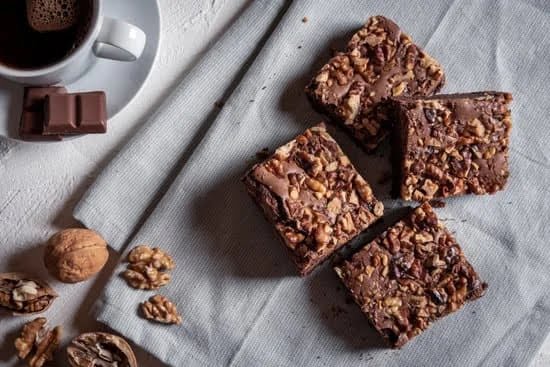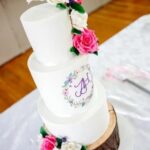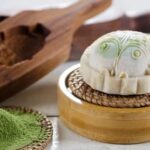Crab-themed cakes have taken the baking world by storm, capturing the hearts of both cake enthusiasts and seafood lovers alike. These stunning creations not only delight the taste buds but also serve as eye-catching centerpieces that are sure to impress at any event or celebration.
In this article, we will delve into the art of creating a truly remarkable crab decorated cake. From selecting the perfect cake base and frosting to shaping and carving the crab body, we will guide you through each step of this creative process.
The joy of creating a crab decorated cake lies in its unique and captivating design. These cakes not only showcase artistic talent but also bring a sense of whimsy and playfulness to any occasion. By using creative cake decorating techniques, bakers can mimic the appearance of a real crab with astonishing detail and precision. From lifelike claws and legs to intricate details like eyes and joint lines, every element contributes to making these cakes truly extraordinary.
When it comes to crafting a visually stunning crab decorated cake, selecting the right foundation is crucial. A sturdy cake base that can support the weight of an intricately designed crab body is paramount. Additionally, choosing the perfect frosting that complements the overall theme is equally important. Buttercream or cream cheese frosting often work well with crab-themed cakes, adding both flavor and texture that enhance the overall experience.
In the following sections, we will take a deeper dive into each step involved in creating your very own stunning crab decorated cake. We will explore shaping and carving techniques, discuss various coloring options for fondant, showcase how intricate details bring your creation to life, and even provide tips on choosing flavors that perfectly pair with this delightful theme.
So grab your apron and let’s get started on this exciting journey to mastering the art of creating a stunning crab decorated cake.
A Sumptuous Palette
When it comes to creating a stunning crab decorated cake, selecting the perfect cake base and frosting is essential. The right combination will not only provide a sturdy foundation for your design but also enhance the overall flavor profile of the cake. In this section, we will discuss the importance of choosing a sturdy cake base and explore various frosting options that complement the crab theme.
One key consideration when selecting a cake base is its ability to support the intricate design of your crab decorated cake. A dense and sturdy cake, such as a pound cake or a sponge cake, is recommended to ensure that your creation stands tall throughout the decorating process. It’s important to avoid using light and fluffy cakes like angel food or chiffon, as they may not be able to bear the weight of the decorations.
In addition to choosing a sturdy cake base, selecting the right frosting is crucial in enhancing both the appearance and taste of your crab decorated cake. Buttercream frosting is a popular choice for its versatility and ability to hold intricate designs well.
It can be easily tinted with food coloring to match the vibrant colors of a real crab’s body. Cream cheese frosting is another option that pairs well with crab-themed cakes, offering a slightly tangy flavor that complements various fillings.
To summarize, selecting a sturdy cake base and complementary frosting plays an important role in creating an impressive crab decorated cake. By opting for dense cakes like pound or sponge, you can ensure stability throughout the decorating process. Moreover, buttercream or cream cheese frostings provide excellent options for adding color and flavor while supporting intricate designs. With these base and frosting selections in mind, you’re one step closer to creating an exquisite crab themed masterpiece.
| Sturdy Cake Base Options | Complementary Frosting Options |
|---|---|
| Pound cake | Buttercream frosting |
| Sponge cake | Cream cheese frosting |
Conquering the Crustacean
Creating a stunning crab decorated cake requires mastering the art of shaping and carving the crab body. With some patience and attention to detail, you can achieve a realistic crab shape that will wow your guests. In this section, we will provide step-by-step instructions on how to carve the cake into the basic crab shape and offer tips and tricks for achieving realistic curves and texture using basic tools.
Step-by-Step Carving Instructions
To begin carving your crab cake, start with a sturdy base such as a sheet cake or multiple layers of round cakes. Use a serrated knife to carve the general outline of the crab body, making sure to leave enough space for the claws and legs. Gradually shape the cake by cutting away small sections at a time, referring to reference images or templates if needed.
Achieving Realistic Curves and Texture
To add depth and texture to your carved crab body, use tools like an offset spatula or a small paring knife to scrape lines into the frosting. Create rounded features by removing small chunks of cake in curved shapes. Pay attention to areas where joints connect, such as between the head and body or between each leg segment, as these areas often have distinct lines.
Tips and Tricks for Realism
To make your crab decorated cake look even more realistic, consider adding details like raised eyes or defined mouthparts. Use extra pieces of carved cake or fondant to create these details and attach them securely with toothpicks or edible glue. Remember that crabs come in various sizes, so adjust the proportions of your cake accordingly if you want it to resemble a specific type of crab.
With careful carving techniques and attention to detail, you can transform a simple cake into an impressive crustacean masterpiece. In the next section, we will explore how to bring the Crab Decorated Cake further to life by using fondant to add vibrant colors and realistic features.
A Burst of Color
When it comes to creating a stunning crab decorated cake, one of the most important steps is bringing the crab to life with fondant. Fondant is a versatile decorating material that allows for intricate detailing and vibrant colors, making it perfect for mimicking the distinctive features of a crab’s body. In this section, we will explore the art of using fondant to bring your crab cake to life.
To start, it is crucial to create the right colors for your fondant. A vibrant red is typically used for the body of the crab, while shades of orange can be used for the claws and legs. Achieving these colors can be done by mixing gel-based food coloring into white fondant. Be sure to knead the fondant thoroughly until you achieve an even color throughout.
Once you have your desired colors, it’s time to shape and mold the fondant into realistic crab features. Begin by rolling out a portion of red fondant and draping it over the carved cake body. Smooth out any wrinkles or creases using a cake smoother or your hands. Next, take small amounts of orange fondant and shape them into claws and legs. Use reference images or real crabs as a guide for shaping these features accurately.
To attach the fondant pieces to the cake, use edible glue or water brushed on with a clean paintbrush. Press each piece firmly onto the cake and smooth out any seams or edges with your fingers or modeling tools. Remember to add texture and details such as joint lines using small tools like toothpicks or veining tools.
Fondant provides endless creative possibilities when it comes to crafting intricate features for your crab decorated cake. Whether you’re sculpting realistic claws or adding texture to mimic a crab’s exoskeleton, working with fondant allows you to truly bring your creation to life in an impressive display of color and detail.
Exquisite Details
Adding intricate details to your crab decorated cake is essential to achieving a stunning and realistic final product. It is the small touches that truly bring the cake to life and captivate your guests’ attention. By incorporating edible artistry techniques, you can enhance the depth and realism of your crab design.
Eyes, Mouth, and Joint Lines
When adding the eyes to your crab cake, consider using edible pearls or candies for a glossy finish. Place them strategically on the face of the crab to give it a sense of personality. The mouth can be created using colored fondant or piped buttercream icing for added texture.
To create joint lines, use a small knife or fondant tools to carefully indent lines where the legs meet the body. This will give your cake an even more authentic appearance.
Edible Paint and Airbrushing
Edible paint and airbrushing are excellent techniques for adding depth and dimension to your crab decorated cake. Mixing food coloring with alcohol or clear vanilla extract allows you to create an edible paint that can be used for detailed shading or highlighting.
An airbrush tool can be used to achieve smooth transitions from one color to another, creating a more realistic appearance on the surface of your cake. Experiment with different shades and intensities of red, orange, and brown to mimic the colors found on real crabs.
Texture and Patterns
Incorporating texture and patterns will further enhance the realism of your crab decorated cake. For instance, you can use a serrated knife or toothpick to create tiny dots or lines on the legs and body of the crab, mimicking its exoskeleton’s texture.
Another option is imprinting scales onto fondant using textured mats or veining tools. Apply gentle pressure as you roll these tools over thin pieces of fondant before attaching them in layers onto the cake. This will create a textured effect similar to that of a crab’s shell.
By paying attention to these exquisite details and employing edible artistry techniques, you can elevate your crab decorated cake to a whole new level of realism. These artistic elements will leave your guests in awe and make your cake a standout centerpiece at any event or celebration.
Sea of Flavors
When it comes to creating a stunning crab decorated cake, one must not only focus on the visual appeal but also pay attention to the taste. Selecting the right cake flavors and fillings can elevate the overall experience of indulging in this edible masterpiece. By carefully choosing complementary flavors, you can create a cake that is both visually enticing and incredibly delicious.
For a crab-themed cake, it’s essential to select flavors that align with the oceanic theme. One popular option is a lemon-flavored cake, which replicates the refreshing taste of citrus found near the coastlines. The tangy zest of lemon adds a burst of flavor that perfectly complements the richness of buttercream or cream cheese frosting. Another delightful option is coconut-flavored cake, which imparts a tropical feel reminiscent of beachside vacations.
When it comes to fillings, consider options that enhance the flavor profile of your chosen cake. For instance, using lemon curd as a filling for a lemon-flavored crab cake further intensifies its zesty taste. A coconut cream filling paired with coconut-flavored cake will create a harmonious blend of flavors that transports your taste buds to sandy shores.
To maximize both flavor and visual appeal, consider incorporating multiple layers and fillings in your crab decorated cake. By alternating different fillings between layers, you can create a tantalizing combination that surprises and delights with every bite. From fruity jams to velvety chocolate ganache, there are endless possibilities for experimenting with flavors in this edible work of art.
| Cake Flavor | Recommended Fillings |
|---|---|
| Lemon | Lemon curd |
| Coconut | Coconut cream |
Assembly and Final Touches
Once you have shaped and carved your cake into the basic crab shape, it is time to move on to the next step of assembling the crab’s legs and finalizing the design. This stage is crucial in bringing your crab decorated cake to life and adding those finishing touches that will impress your guests.
In this section, we will guide you through the process of constructing the crab’s legs using edible supports and skewers, as well as suggesting additional decorative elements to enhance the overall presentation.
To assemble the crab’s legs, you will need edible supports such as dowels or straws. Carefully insert these supports into each leg section of the carved cake, ensuring they reach all the way through to provide stability. It is important to place these supports strategically so that they can bear the weight of your cake without collapsing.
To maintain a realistic appearance, consider angling some of the legs slightly outward or inward for a natural pose. Secure any wobbly sections with a small amount of buttercream or royal icing.
Now that your crab has sturdy legs, it’s time to finalize the design by adding additional decorative elements. You can choose to decorate your cake with seashells made from fondant or sugar paste, placing them strategically around the body or at the base. Another option is to create edible sand by crushing biscuits or cookies into fine crumbs and sprinkling them along with some brown sugar around the base of your cake for a beach-inspired look.
To truly take your cake to the next level, consider adding realistic textures using edible paints or airbrushing techniques. Paint details such as joint lines on each leg section and create depth by shading certain areas with darker colors while highlighting others with lighter hues. This will add a touch of realism and make your crab appear more life-like.
When your assembly is complete and final touches have been added, step back and admire your masterpiece. Remember to take photographs of your crab decorated cake from different angles to capture its stunning presentation. A beautifully crafted crab cake is sure to impress your guests and make them eagerly anticipate each bite.
In the next section, we will delve into creative display options and share tips for showcasing your crab decorated cake in a way that will leave everyone in awe.
Presentation and Serving
To truly impress your guests with your crab-decorated cake, it is essential to give careful consideration to its presentation and serving. By showcasing the cake in a visually appealing way, you can enhance the overall experience and make it even more memorable for everyone involved.
One creative display option for the crab decorated cake is to serve it on a bed of blue jelly, mimicking the appearance of water. This not only adds an extra touch of realism to the theme but also creates an eye-catching presentation that will surely wow your guests. To achieve this effect, simply prepare blue-colored jelly according to the package instructions and place it in a shallow serving dish or platter.
Carefully place the fully assembled cake on top of the jelly, allowing the legs to extend freely onto the surrounding “water.” This display option will not only elevate the visual appeal of your crab cake but also create a unique and immersive dining experience.
Another idea for presenting your crab-themed cake is by using a beach-themed cake stand. Look for a stand that resembles seashells or colorful coral reefs to complement the overall theme. By placing your masterpiece on an intricately designed stand, you add another layer of detail and sophistication to the presentation. This option works particularly well if you are hosting a beach or summer-themed event, as it enhances the overall atmosphere and ties all elements together cohesively.
Once you have set up your display, don’t forget about capturing Instagram-worthy photos. As much as we value taste, aesthetics play an equally important role in our social media-driven world. To photograph your crab decorated cake successfully, consider using natural lighting or investing in a ring light set up if necessary.
Pay attention to angles and perspectives that highlight key details like realistic claws or textured legs. Experiment with different backgrounds such as beach towels or shells to add interest and texture to your photos. With a little attention to detail during presentation and photography, you’ll be able to preserve the beauty of your crab cake forever and showcase it to friends, family, and online followers alike.
Conclusion
In conclusion, creating a crab decorated cake can be a truly stunning and impressive feat that will leave your guests in awe. Throughout this article, we have explored the various steps and techniques involved in bringing this intricate design to life. From selecting the perfect cake base and frosting to shaping and carving the crab body, adding realistic details with fondant, and choosing complementary flavors and fillings, each step is essential in achieving an extravagant crab decorated cake.
One of the key aspects of creating a crab decorated cake is attention to detail. By adding exquisite details such as eyes, mouth, and joint lines using edible artistry techniques like painting and airbrushing, you can elevate your cake from ordinary to extraordinary. These small touches give depth and realism to the overall design, truly capturing the essence of a crab.
Finally, when it comes to presentation and serving your masterpiece, creativity is key. Consider showcasing your crab decorated cake on a bed of blue jelly or using a beach-themed cake stand to further enhance the theme. And don’t forget about capturing Instagram-worthy photos. Take advantage of good lighting and angles to highlight all the hard work that went into creating this extravagant dessert.
Frequently Asked Questions
What makes a Maryland crab cake different?
A Maryland crab cake is different from other crab cakes mainly due to the ingredients and the way it is prepared. The key component in a Maryland crab cake is, of course, the blue crab meat sourced from the Chesapeake Bay region. This sweet and delicate meat is considered to be the best choice for an authentic Maryland crab cake.
Unlike some other versions, Maryland crab cakes tend to have minimal filler ingredients like breadcrumbs or crackers, allowing the crab meat to shine as the star ingredient. Additionally, traditional Maryland crab cakes are seasoned with Old Bay seasoning, a blend of herbs and spices that adds a distinctive flavor.
What is the difference between crab cake and Maryland style crab cake?
Crab cakes can come in various styles depending on their geographical origin or personal preferences. While all Maryland-style crab cakes can be considered as a type of crab cake, not all crab cakes are specifically identified as “Maryland-style.” The difference lies in the specific characteristics of a Maryland-style crab cake that make it distinct.
These characteristics include using exclusively blue crabs (in particular jumbo lump or backfin), focusing on minimal filler ingredients to enhance the taste of the delicate crab meat, and seasoned with Old Bay or similar regional seasonings. Essentially, a “Maryland style” label signifies adherence to these traditional aspects that reflect the unique qualities of authentic Maryland recipes.
What is the difference between Louisiana and Maryland crab cakes?
The difference between Louisiana and Maryland crab cakes can be attributed to distinct regional influences and culinary traditions. In Louisiana, where Cajun and Creole flavors prevail, you’ll find their version of a seafood cake known as crawfish or shrimp cake instead of one strictly centered around blue crabs like in Maryland’s case. Louisiana-style seafood cakes often contain shellfish like crawfish or shrimp mixed with ingredients such as bell peppers, onions, celery, garlic, and spices like cayenne pepper or paprika for added heat and flavor complexity.
On the other hand, Maryland crab cakes prioritize showcasing the natural sweetness and delicacy of blue crabs without overwhelming seasonings or excessive filler ingredients. The seasoning profile of Maryland crab cakes typically focuses on Old Bay and a few complementary flavors to highlight the crab’s taste rather than heavily spicing it up.

Welcome to our cake decorating blog! My name is Destiny Flores, and I am the proud owner of a cake decorating business named Cake Karma. Our mission is to provide delicious, beautiful cakes for all occasions. We specialize in creating custom cakes that are tailored specifically to each customer’s individual needs and tastes.





